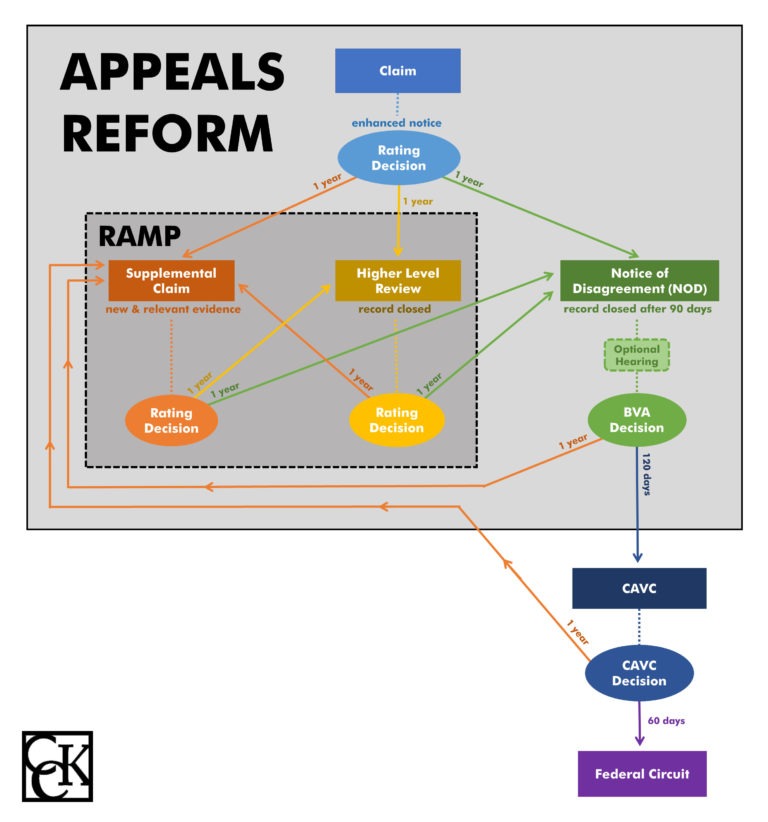Switching Lanes Under Appeals Reform

CCK Law: Our Vital Role in Veterans Law
Appeals Reform intends to provide veterans, their families, and their survivors increased choice in handling disagreements with VA’s decision. Specifically, the new system allows veterans to choose from three different lanes when filing an appeal: the supplemental claim lane, the higher-level review lane, and the Notice of Disagreement Lane (i.e. Appeal to the Board of Veterans’ Appeals). This emphasis on increased choice continues at the Board level as claimants are provided with an additional three lanes to choose from: the direct docket, hearing docket, and evidence docket.
Switching Lanes at the Regional Office Level
Importantly, claimants can change their request for a certain review option at any time prior to VA issuing a decision on their claim. If the claimant’s lane withdrawal occurs within the one-year period following the date VA issued the decision being reviewed, the claimant can choose another review option and their effective date will be preserved. For example, a claimant who received a denial of benefits and appeals via the higher-level review lane, but then discovers new and relevant evidence, could withdraw from the higher-level review lane and request that his/her appeal be moved to the Supplemental Claim lane for review. Receipt of an unfavorable decision also presents an opportunity to change your appeal lane. For example, a claimant can submit a supplemental claim with new and relevant evidence after receiving an unfavorable decision from higher-level review, even though he or she did not select the supplemental claim lane to begin with.
Additionally, Appeals Reform proposes that claimants will be able to select different lanes for different issues after full implementation on or after February 14, 2019. However, claimants may not elect to have the same issue reviewed concurrently under different review options.
Switching Lanes at the Board of Veterans’ Appeals Level
Claimants are also permitted to switch dockets at the Board level by modifying their Notices of Disagreement. In creating this policy, VA sought to provide claimants with an opportunity to change their initial election if their circumstances and preferences changed. However, VA also wanted to prevent claimants from unfairly gaining the advantage of two dockets. For example, at the Board level, claimants will not be permitted to take advantage of the faster direct docket if he or she has already submitted evidence or testified at a Board hearing. Therefore, VA proposes to limit the time period in which claimants may request to modify their Notices of Disagreement.
Under Appeals Reform, this request to modify must be made within one year of the agency of original jurisdiction decision on appeal, or 30 days after the Notice of Disagreement is received by the Board, whichever is later. As indicated above, the request will be denied if the claimant has already submitted evidence or testimony.
About the Author
Share this Post
